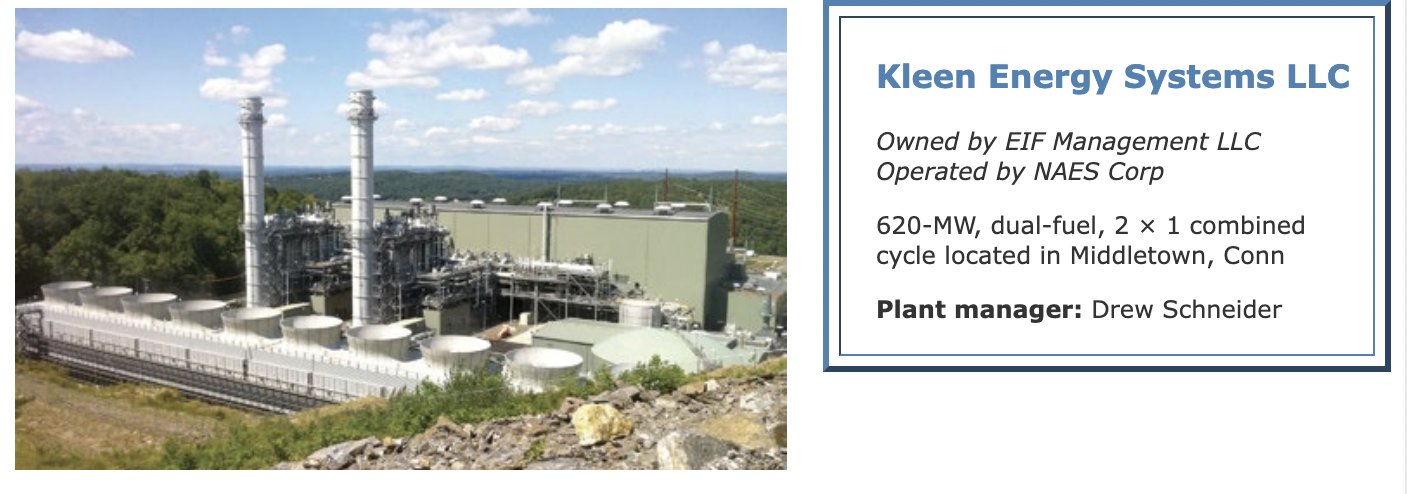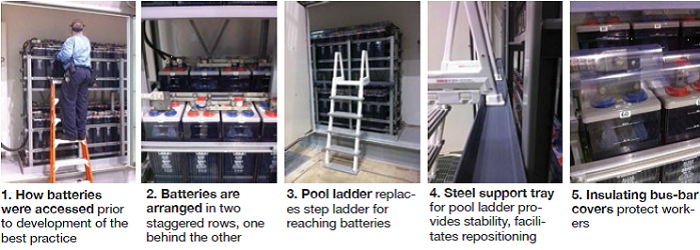Safety improvements for battery maintenance
Best Practices Award

Challenge. Kleen Energy’s 620-MW, 2 × 1 combined cycle is equipped with a multi-cell battery bank that supplies DC power to the gas-turbine electrical package. Each bank of 60 flooded-cell lead-acid batteries has a lower and upper rack with the batteries arranged in two staggered rows (one behind the other).
Routine preventive maintenance (PM) includes inspecting the physical and mechanical condition of batteries, supports, mounting, etc; verifying electrolyte levels; measuring charger float and equalizing voltage levels; measuring cell voltage across battery terminals; and measuring cell specific gravity and temperature. PM records are essential for assuring satisfactory performance and identifying when corrective action may be required.
Accessing the top rack of batteries was difficult, requiring use of a step ladder leaning against the battery bank (Fig 1). Furthermore, accessing the back row of batteries required leaning over the bus bars on the front row of batteries, creating additional safety hazards (Fig 2).
Solution. Kleen Energy assembled a team of maintenance, operations, and management personnel to analyze the battery maintenance PM and identify improvements, including the following steps:
- Document the job sequence/steps in the PM.
- Identify safety hazards in each step.
- Identify possible safety improvements—work practices, equipment modifications, etc.
- Create an implementation plan/dates for safety improvements.
- Assign action items to applicable plant personnel to complete safety improvements.
The team visited the battery bank to simulate the PM sequence, and then captured the entire resolution process in the plant CMMS.

I&C Technician Pete Salegna and Mechanic Brian Kennedy came up with the idea to use a pool ladder for accessing the battery bank instead of the traditional step ladder (Fig 3). Then they installed a steel support tray for the ladder to rest on, providing stability and easy repositioning of the ladder during the PM (Fig 4). Mechanic Doug Rusczyk reinforced the strength and stability of the ladder by inserting a steel rod down the length of the legs. I&C technician, Rick Remsen installed insulating bus bar covers to prevent hazards when operators lean over the batter ies (Fig 5).
ies (Fig 5).
Results. Kleen Energy has made an intrinsically unsafe process much safer through its continuous improvement process involving several employees with complementary skill sets, and by encouraging creative solutions to challenging problems. For example, some of the intrinsic safety issues required “out of the box” thinking and solutions, like the pool ladder. By testing out the ladder, and later improving its effectiveness by reinforcing it with steel rods, the team was able to devise a solution to a difficult problem.
Project participants:
Jason Farren, EHS manager
Brian Kennedy, mechanic
Rick Remsen, I&E tech
Doug Rusczyk, mechanic
Peter Salegna, I&E tech


